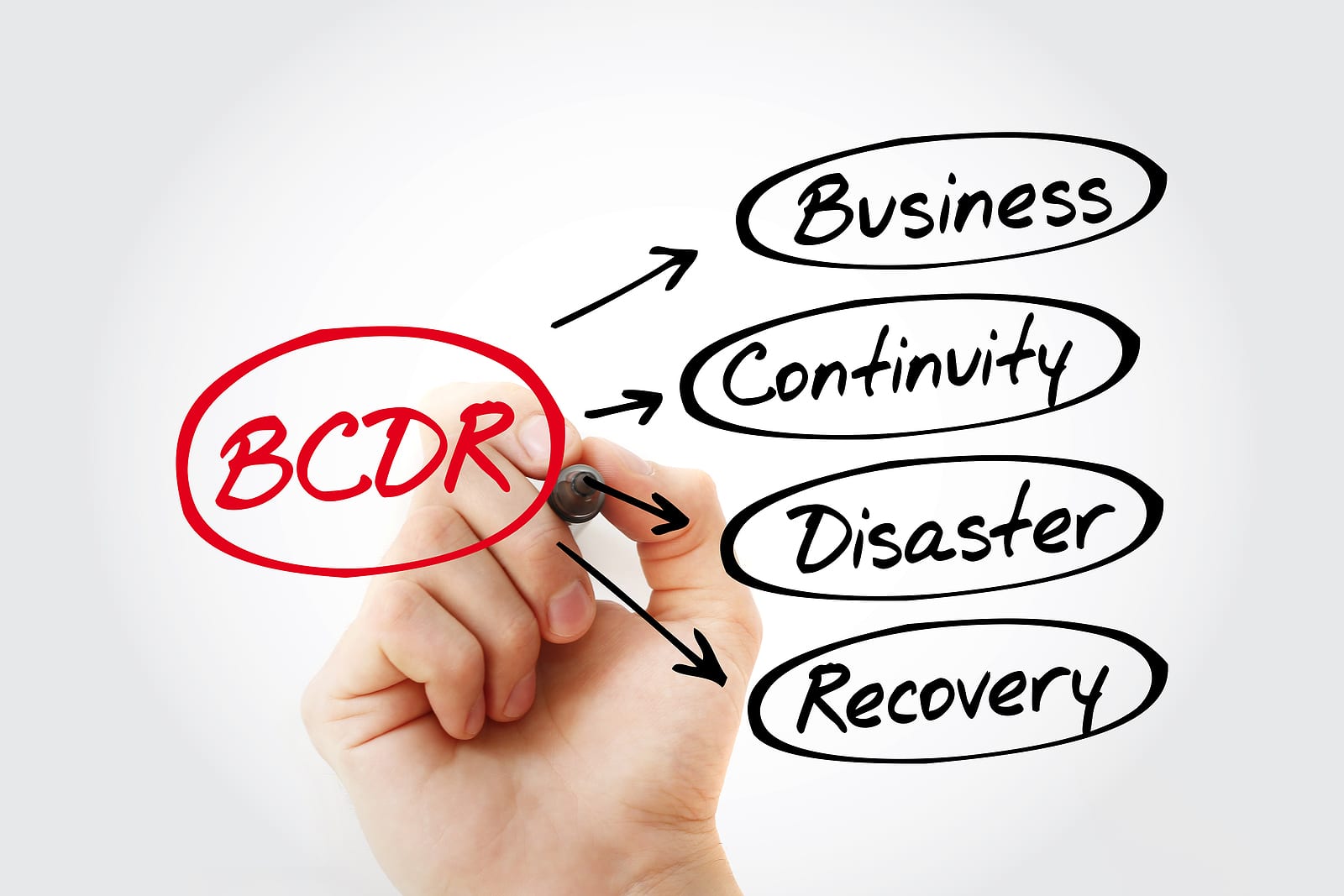Organization leaders often mention business continuity and disaster recovery in the same breath. This makes sense, especially because they work hand in hand. But the steps you take and the technology you use to ensure both are sometimes very different. It’s vital to understand their differences, what they are individually, and how they work together collectively.
What Is Business Continuity?
Business continuity refers to the procedures and technology you use to keep business operations going during a disruptive event. As a simple example, suppose you continually run a hospital and provide life-support services to hundreds of patients. If a major snowstorm is in the forecast, one of the first things you may check is your backup power system. Ideally, regardless of how powerful the storm is, you want your life support systems to suffer little or no interruptions. In this way, backup power enables business continuity.
Business continuity is also a major consideration for organizations that use and manage large amounts of data. In some cases, a company may choose to have multiple backup systems, both on-premise and in the cloud, just to ensure they can maintain business continuity through various potential disruptions.
For example, if a hacker were to penetrate their system and infect it with ransomware malware, the primary database could end up offline. But if their business continuity system included a cloud-based backup, they could be back up and running in a matter of minutes — or even less. In other words, instead of negotiating with the ransomware hackers, they can simply wipe their on-premise database and restore it from their cloud-based backup.
What Is Disaster Recovery?
Disaster recovery plans refer to a company’s protocols and strategies to bounce back as quickly as possible in the wake of a disaster, such as a fire, flood, or cyberattack. Unlike a business continuity system, a disaster recovery plan typically focuses on what caused the disaster and how to mitigate it instead of only getting important systems back online.
Because both business continuity and disaster recovery play essential roles in cyber security, an example from the cybersecurity realm makes it easy to see their differences.
How Business Continuity and Disaster Recovery Work in Cybersecurity
Business continuity and disaster recovery typically work as teammates, especially when your IT support has to handle a cyberattack. For example, suppose your IT team has a network monitoring system in place that detects anomalous activity, such as particularly heavy data transmissions either coming into or flowing out of your network.
One day, the monitoring system issues an alert showing huge amounts of data exiting your system from a database that holds sensitive customer information. Here’s how your disaster recovery plan and business continuity infrastructure can help mitigate this incident and its effects.
Disaster Recovery During a Data Exfiltration Attack
Whenever your team identifies a potential data exfiltration attack, the first step may be to verify that you’re actually being attacked. In the example above, your network monitoring solution may also produce data pointing to unusual external requests that could have resulted in the exfiltration attack. However, even if you don’t have evidence of abnormal requests, the fact that sensitive data could be streaming out of your network may be evidence enough.
Next, because this attack could be levied by malware, your disaster recovery plan may dictate that you look for evidence of east-west, or lateral, movement between the impacted database and other endpoints or areas of your network. If they don’t detect any lateral movement, they now know which system they have to shut down to mitigate the attack.
Business Continuity During a Data Exfiltration Attack
As is the case in many incidents, the first steps taken during an incident may fall under your disaster recovery plan, simply because stopping the incident from spreading or impacting other systems is a high priority. Soon after — or even simultaneously — your business continuity system kicks in.
With a data exfiltration attack, for example, the business continuity team may check the disaster recovery plan and see that it calls for using a backup, cloud-based database in the event an incident compromises the primary, on-premise one. To maintain business continuity, the team would have to communicate with its cloud service provider, tell them about the situation, and work together to make sure employees can get back to work and customers can continue shopping and purchasing as soon as possible.
Start Designing Your Business Continuity and Disaster Recovery Systems Today
With Robust Networks’ network consulting services, you get the guidance you need to strategize your organization’s most effective business continuity and disaster recovery plans. In this way, you can minimize the impact of negative events on your network resources and continue serving customers. Learn more by connecting with Robust Networks today.

